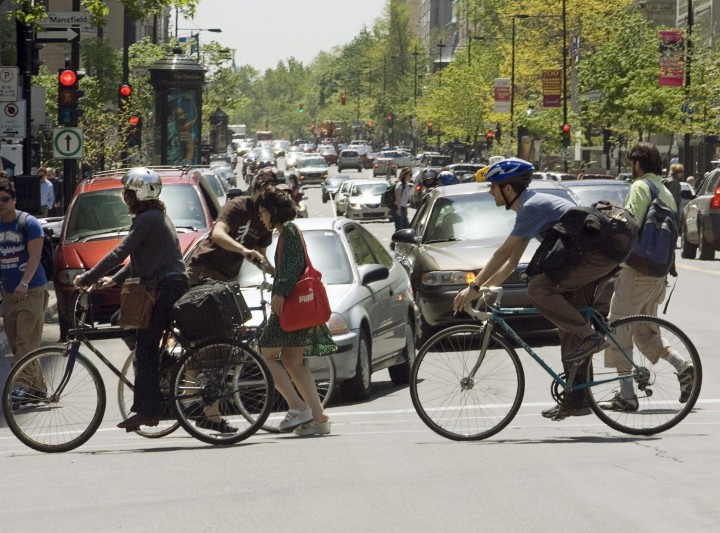If you ever take to the roads in Quebec, you might want to be aware of these new changes, effective Friday:

Drivers
Drivers must slow down and respect a safe distance when passing a cyclist or pedestrian:
- 1 metre on roads where the limit is 50 km/h or less
- 1.5 metres on roads where the limit is more than 50 km/h
This applies when a cyclist or organized group of cyclists and/or pedestrians is on the road, shoulder or on a bicycle lane not separated by a median.
READ MORE: Quebec imposes curfew, passenger limit for young drivers
It is prohibited to use a cell phone or any other portable device for entertainment purposes, with some exceptions. The fine for drivers is now $300 to $600.
WATCH BELOW: Road deaths involving young people increases in Quebec

In the case of a repeat offence, the minimum fine is doubled and the license is immediately suspended for three, seven or 30 days, depending on whether it’s a first, second or third offence in a two-year period. The number of demerit points increases from four to five.
READ MORE: Quebec’s Bill 165 aims to kick distracted driving to the curb
Drivers can wear an earphone with only one ear in.

Get weekly money news
Cyclists
Cyclists will no longer be required to signal their intentions to slow down or stop.
READ MORE: Growing number of potholes in Montreal wreaking havoc on the roads
They must continue to signal their intentions to turn, unless it endangers their safety; demerit points no longer apply to cyclists.
Cyclists can now ride:
- as close as possible to the edge or right side of the roadway, taking into account the condition of the roadway and the risk of car dooring;
- between two rows of vehicles when there is a right turn lane.
Cyclists can ride on the shoulder in the same direction as traffic and may ride on the sidewalk, if allowed by a municipality via signage, as long as they travel at a reasonable speed and give priority to pedestrians.
READ MORE: Montreal city buses being targeted in road safety pressure tactic
It is prohibited to use a cell phone or any other portable device for entertainment purposes, with some exceptions. The fine is $80 to $100. Motorized mobility aid users will be fined $30 to $60.
WATCH BELOW: Petition to make Quebec road signs bilingual

Cyclists cannot wear earphones or have a passenger, animal or object obstructing their view.
They must stop at least five metres away when a bus transporting children has its flashing lights.
READ MORE: Quebec police use big white bus to catch distracted drivers
Cyclists can continue if traffic lights are red for drivers, but green for pedestrians, as long as they give priority to pedestrians.
https://twitter.com/billyshields/status/997502383990206471
Fines for offences committed by cyclists and other non-motorized mode of transport (foot scooters, roller blades, skis) have increased to $80 to $100.
Pedestrians
Pedestrians have priority when crossing at a pedestrian crossing.
In the absence of a sidewalk, pedestrians can walk on the shoulder in the opposite direction of traffic.
WATCH BELOW: CAA-Quebec starts annual worst roads campaign

They can only walk in the same director as traffic, on the roadway or on the shoulder if they are avoiding crossing the roadway multiple times over a short distance, if that side of the street is better lit or if the shoulder is wider.
Drinking and driving
Someone who has been repeatedly caught for drinking and driving will now have to have an alcohol ignition interlock device — or a breathalyzer — on their vehicle.
READ MORE: Government report says more money needed for Quebec’s battered road network
After 10 years, the offender may apply to have the breathalyzer taken off, if they are able to prove that their relationship to drugs and/or alcohol will not compromise their ability to drive.
For a complete list of the changes, click here.


Comments